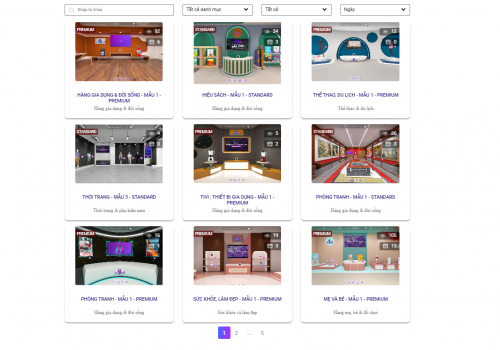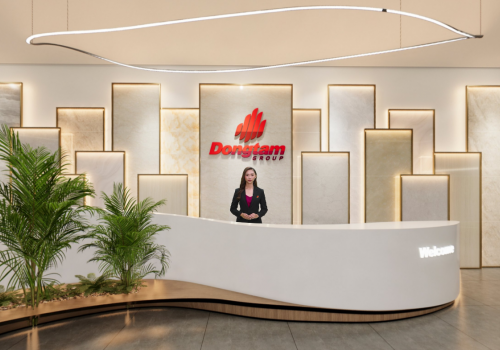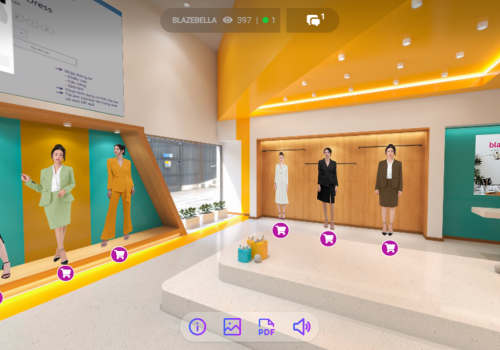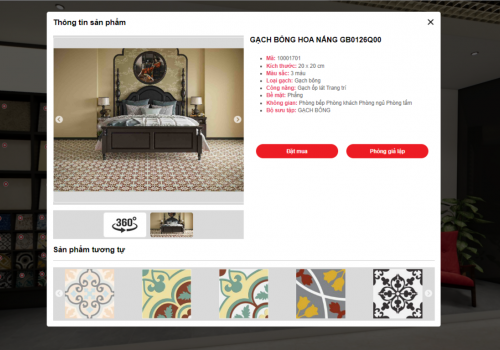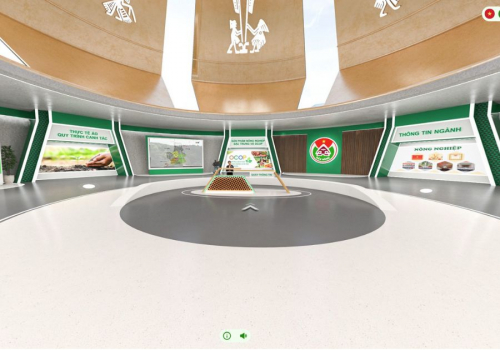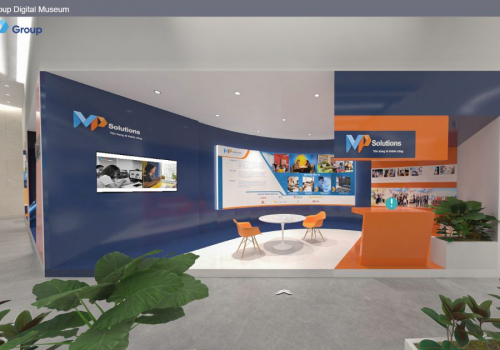Collect information, survey customer needs.
Consult and outline script ideas.
Organize meetings to discuss and agree.
Confirm script and ideas with customers.
At vrMall, businesses are equipped with an online store featuring a fully functional 3D interface that replicates the experience of a real store. Products are showcased in an intuitive, multi-dimensional space, allowing viewers to conveniently access detailed product information such as color, size, and shape. Additionally, the platform integrates seamlessly with e-commerce platforms, enabling easy payment and creating a smooth and unified shopping experience.
vrMall boasts a library of over 100 sample booths with visually appealing, modern designs tailored to serve businesses across various industries, including restaurants, showrooms, retail, and more. Beyond these templates, vrMall also offers custom virtual booth design services, allowing businesses to create unique and personalized spaces that reflect their brand identity. This solution helps businesses enhance competitiveness, expand reach, and connect with global customers more effectively.
Moreover, the platform provides advanced solutions for organizing virtual exhibitions, fairs, and trade shows. It allows organizers to create personalized virtual event spaces to showcase products from businesses, organizations, and stores. This feature enables seamless connections with remote partners and customers, optimizing engagement and boosting effectiveness.
As an “All in one” platform, vrMall helps businesses improve customer experience and trust; save time and costs. At the same time, the platform allows 24/7 shopping.
Owning a vrMall virtual reality booth helps businesses enhance their reputation and build customer trust. Contribute to increasing brand recognition, demonstrating investment and long-term orientation for the business e-commerce channel.
Online shopping is a new consumer trend. With just a few simple steps, businesses can create a booth on vrMall, promote products, and save time and money compared to traditional physical stores.
Step
1
Receive and process as required
Collect information, survey customer needs.
Consult and outline script ideas.
Organize meetings to discuss and agree.
Confirm script and ideas with customers.
Step
2
Quotation and completion of project documents
After confirming the script and idea, VR360 will quote and send it to the customer for confirmation.
After the quote has been confirmed, both parties will process the paperwork before starting the project implementation.
Step
3
Project implementation - Data collection
After processing the contract documents, VR360 will proceed to notify the project implementation.
VR360 will send the expected timeline and notify the upcoming implementation work based on the agreed time and information.
The team will start with the initial data creation work. Input data can be 360 images taken in reality or 3D spatial designs or 3D models, etc. (depending on the nature of the product/service).
For products that require collecting 360 images and videos of the scene, VR360 and the customer will agree on a suitable construction date. The customer is required to prepare support personnel, prepare a neat and clean space, remove unwanted details... before construction.
For products with 3D designs, there will be many feedback and editing between the two parties to complete and ensure 3D quality before rendering and programming.
Step
4
Project implementation - Product creation
After having enough input data, VR360 will proceed to program to create the product.
The tasks will be listed in detail according to the timeline so that both parties can closely follow the project progress.
During the construction process, if there is any additional work or adjustment, VR360 will discuss with the customer to agree on the plan.
Step
5
Feedback and editing
After completing the product, VR360 will send the first product to the partner and proceed to the feedback and editing stage.
Each project will have 2-5 feedback and editing sessions (depending on the scale of the project) to complete the appropriate product.
Step
6
Handover and acceptance
Edit and complete the final product.
After the product is completed, the two parties will proceed to accept and pay for the project according to the work items that have arisen.
Detailed instructions for using the product - service.
Step
7
After-sales policy
Edit and complete the final product.
After the product is completed, the two parties will proceed to accept and pay for the project according to the work items that have arisen.
Detailed instructions for using the product - service.

